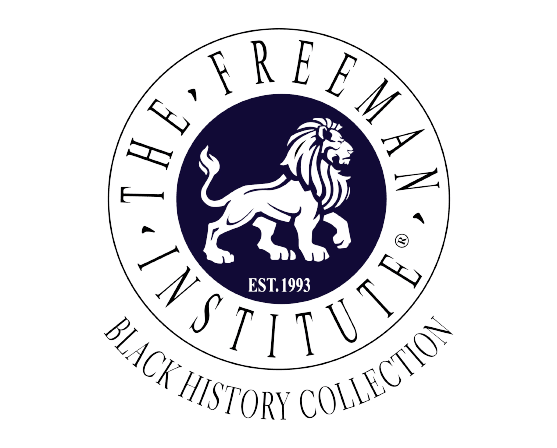
Wedgwood Jasperware Abolitionist, Anti-slavery Cameo Medallion

2. Wedgwood jasperware Abolitionist, Anti-Slavery cameo medallion (3 medallions in the collection), with the bound slave on the front and the words "Am I Not A Man and A Brother?" around it. From 1787 until his death in 1795, Josiah Wedgwood actively participated in the British Abolition of Slavery cause. Josiah’s most important contribution to the movement for the Abolition of Slavery, the so-called Slave Medallion, brought the public's attention to the horrors of the Slave trade. (There are varying views on the portrayal of bound slaves and slogan.)
Josiah Wedgwood sent a large number of cameos to Benjamin Franklin in Philadelphia who also remarked on the value of the medallion as a means of bringing awareness of the existence if slavery to the public. What is particularly amazing is that the climate of the Revolutionary War was hostile to good British/American relations. In this context the abolitionist movement was born and people came together to fight the evils of the Slave Trade.
-- Also, an absolutely rare mid-1800s antique bronze figure of man (weighs 18 oz.) pictured to the right -->
BACKGROUND:Josiah Wedgwood (1730-1795) is considered by many as one of the most influential figures in the history of Western civilization ceramics, and was a successful and renowned innovator, scientist and businessman. He was also a supporter of the 18th century Anti-Slavery Committee and designed a cameo medallion depicting a slave kneeling in chains surrounded by the inscription, “Am I not a man and a brother?” Benjamin Franklin said of Wedgwood’s tokens, “they may have an effect equal to that of the best written pamphlet.” Although thousands were freely given to anyone who shared Josiah’s sentiments on slavery, thousands more were manufactured and sold. Wedgwood showed that one could promote social change while building a business. Doing good while doing well.
This symbol was the first and most identifiable image of the 18th century abolitionist movement: a kneeling African man. Members of the Society of Friends, informally known as Quakers, were among the earliest leaders of the abolitionist movement in Britain and the Americas. By the beginning of the American Revolution, Quakers had moved from viewing slavery as a matter of individual conscience, to seeing the abolition of slavery as a Christian duty. Quakers, who believe in simplicity in all things, tended to view the arts as frivolous; but when the Quaker-led Society for Effecting the Abolition of the Slave Trade met in London in 1787, three of its members were charged with preparing a design for "a Seal to be engraved for the use of this Society." Later that year, the society approved a design "expressive of an African in Chains in a Supplicating Posture." Surrounding the naked man was engraved a motto whose wording echoed an idea widely accepted during the Enlightenment among Christians and secularists: "Am I Not A Man and A Brother?" The design was approved by the Society, and an engraving was commissioned.
ADDITIONAL BACKGROUND: The design was symbolic both artistically and politically. In addition to evoking classical art, the figure's nudity signified a state of nobility and freedom, yet he was bound by chains. Black figures, usually depicted as servants or supplicants, typically knelt in the art of the period, at a time when members of the upper classes did not kneel when praying; this particular image combined the European theme of conversion from heathenism and the idea of emancipation into a posture of gratitude. In 1788, a consignment of the cameos was shipped to Benjamin Franklin in Philadelphia, where the medallions became a fashion statement for abolitionists and anti-slavery sympathizers. They were worn as bracelets and as hair ornaments, and even inlaid with gold as ornaments for snuff boxes. Soon the fashion extended to the general public. Although the intent and the effect of the emblem was to focus public opinion on the evils of the African slave trade (which it did accomplish), its ultimate effect was to underscore the perception of black inferiority. The supplicant posture of blacks persisted as a standard feature of Western art long after slavery was abolished. Ironically, although the image became the emblem of the anti-slavery movement, the Society for Effecting the Abolition of the Slave Trade was emphatic that its only goal was the abolition of the slave trade, not of slavery itself. That position was vigorously protested by individual members such as Granville Sharp, the most influential abolitionist of his time.
-- Unique vintage brass door knocker with an image of William Wilberforce on the knocker. On the part affixed to the door is an image of the African slave with the words, "Am I Not A Man and A Brother?".
-- Deluxe Ruskin Folio Limited Edition JMW Turner R.A. - The Slave Ship -- Fine Laid Paper with full Intaglio plate mark ~ VERY RARE 1 of only 160 published plates. Beautiful JMW Turner R.A. illustration from the work in the Collection of the Museum of Fine Arts, Boston, U.S.A." published in 1900 as one of only 160 de-luxe folio edition illustrations compiled by Frederick Wedmore as an "Exposition of the Work of Turner from the Writings of Ruskin" and published by George Allen, Charing Cross, London.
Send a Message
Contact Us
Office location
Gambrills, MarylandGive us a call
(410) 991-9718Send us an email
[email protected]Other website
freemaninstitute.com/Collectmain.htm